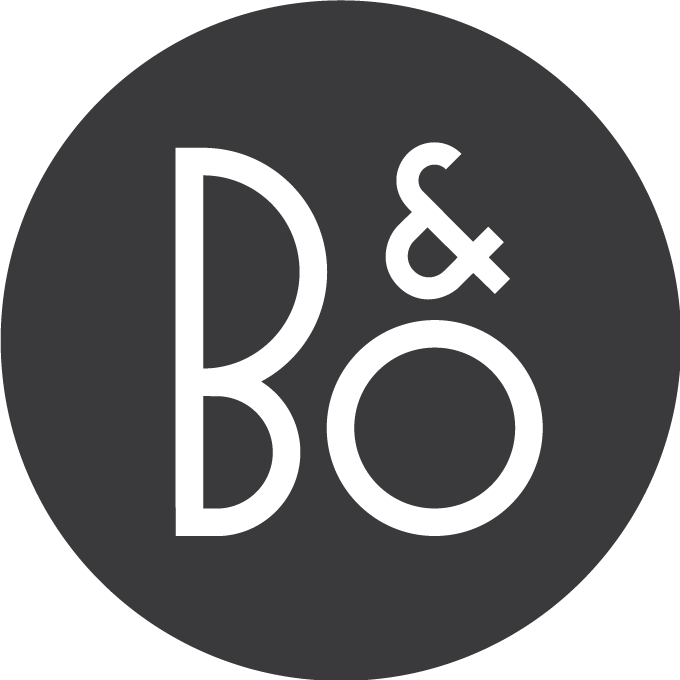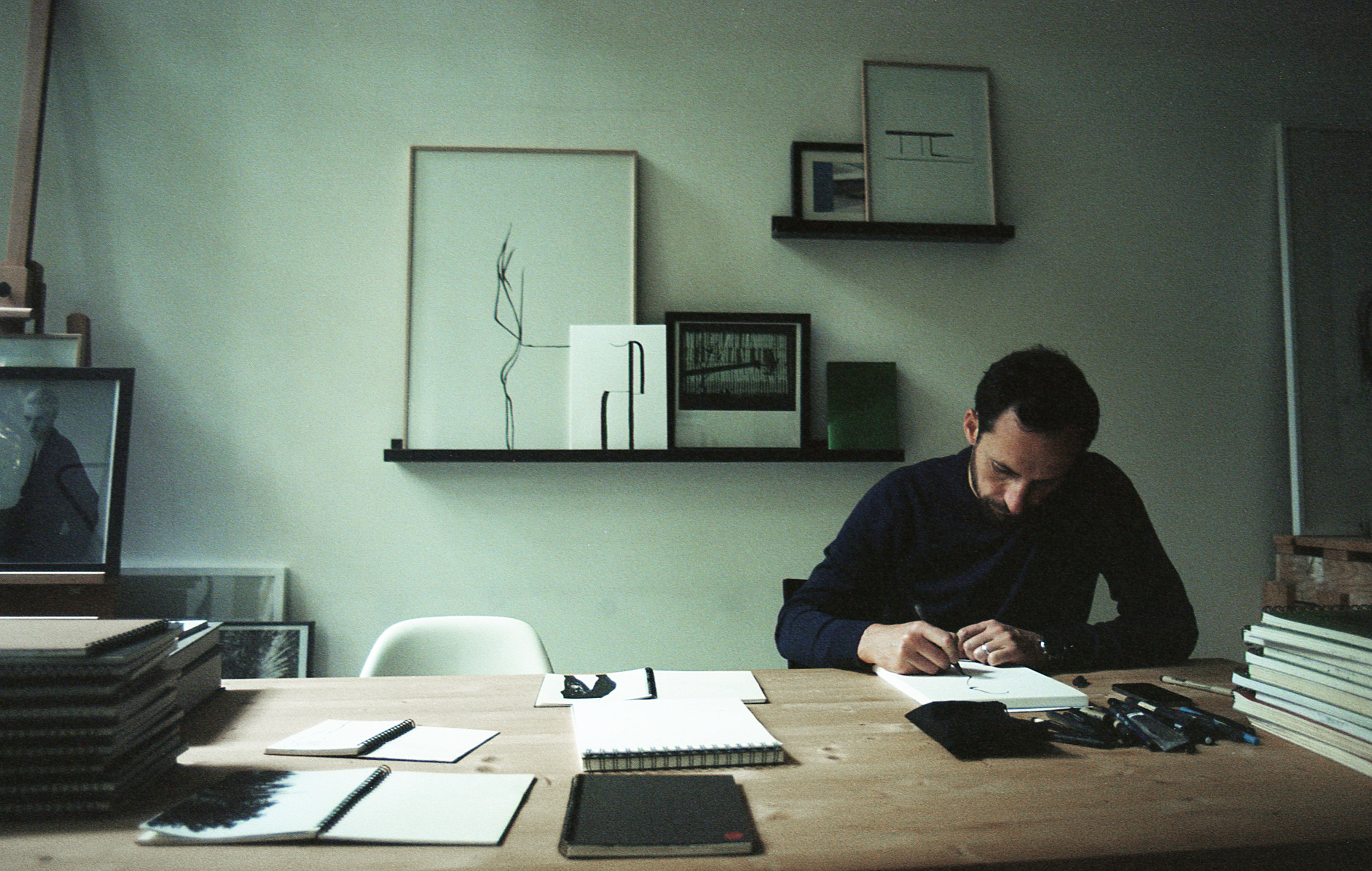Designer and draughtsman Frédéric Forest on the peaceful solitude of picture making, and the benefits of looking at your own work through the eyes of a camera.
Photo: Sam Copeland
Art Matters
Frédéric Forest
Bang & Olufsen have commissioned designer and draughtsman Frédéric Forest to create a series of drawings reacting to the urban soundscape of Milan, marking the 2018 edition of the Salone fair. Below, we discuss how drawing feeds into design, the peaceful solitude of picture making, and the benefits of looking at your own work through the eyes of a camera.
Interview by Nate Budzinski
You trained and work as an industrial designer. Does this object-focused practice inform the more open-ended practise of drawing, and vice versa?
My artwork is about drawing. My main focus is design. Actually, I love them all, I have no favourites. Each field provides a new way to look at the other ones and this nourishes each aspect for me. Because they are all so very different: drawing stops on the paper, but paper is just the beginning for design.
Drawing is always part of a being a designer. It is the first word, the starting point, then it develops several sentences and eventually becomes the answers we were looking for. Then it turns into something else: from modelling to the final, real product.
But the main thing is the number of people that are involved. A design project is very much a casting process from the client’s team, our design studio team, the partners, suppliers, retailers, etcetera. A good team of clients means that the brief will be good, which means that it will provide us with a good challenge; which then means good design, which finally turns into a good product.
When I’m drawing, however, I'm unequivocally alone. It all has to come from me. It's like skiing or surfing. No matter the project or end idea, I need to trust myself, go with it, and let it all flow naturally.
Traditionally, drawing is an intimate and contemplative act: the artist in the focused, quiet space of their studio, rendering fragments of the busy, noisy outside world. For you, can drawing happen anywhere, or do you need a specific mood or space to draw?
This is so right. Drawing is both a quiet and silent art so that the artist can focus solely on his or her action. But as it is an act that plunges you into your own mind, which is a piece of yourself, and therefore takes you out of the habitual surrounding world, I find that I can draw almost anywhere. Whether I draw in a museum or surrounded by nature, it is rather physical things that come to disturb me: a person who jostles you, a gust of wind, a shadow that is placed on the sketchbook, but rarely sounds.
Frédéric Forest's drawing of the Milan Bang & Olufsen store, Corso Garibaldi 2, 17–21 April, where there will be an exhibition, “Sound As Interior” launching a new Cecilie Manz-designed product.
““Drawing an “etude” doesn’t take a very long time. But coming to draw one takes time.””
Do you have a general method or process in terms of planning and executing a drawing? How do you choose your subjects, what materials do you employ, and how does drawing shift your attentiveness – eg is it relaxing, enervating, exciting etc?
Opening a page of a magazine, reading a book, walking in Paris, visiting an exhibition, whatever it is, whether it is calm or electric, anytime, anything can trigger in me a desire to draw and it is not necessarily what is in front of me but rather what it makes me think of. It follows a pretty primitive instinct. Still life, landscapes, bodies, female or male, wild life, architecture, objects. I change subjects very regularly.
Drawing an “etude” doesn't take a very long time. But coming to draw one takes time. Finding the right pose, the perfect light, the most important aspect of the image that I have in mind, and the perfect tool. What then appears on the paper is a whole other phase.
A lot of your work ends up online, and I can think of many instances where drawings and paintings lose their nuance in this context. Is this digital, public aspect in your mind when drawing – how it will look online – or is this an outcome you put aside during the process?
Actually, it is quite the opposite – much of my work stays offline. I first had the idea to take pictures of my drawings to be critiqued, to see what I could not see as defects or qualities. It was above all a critical and relaxed approach. It's something I do from time to time. It's a very good technique for moving forward and improving the work. Watching our own work through the eyes of a camera. It's like being on the other side of a mirror. I know that some musicians have this kind of solution: they take with them what they just recorded in the studio, take their car and drive aimlessly while listening to their tape. It's very effective.
The digital network is more about a rhythm, something permanently waiting for something new, something that pushes a story. My own work is about sensations, emotions that run through me, that I share from time to time. I have over 6,000 drawings – in sketchbooks of different sizes, in folders or boxes. They are neatly arranged, scanned and numbered. That's the real life of these drawings. I do not show them all or sell them all. Many of them are personal. Some more than others. Instagram just allows me to share some in a unique format.





